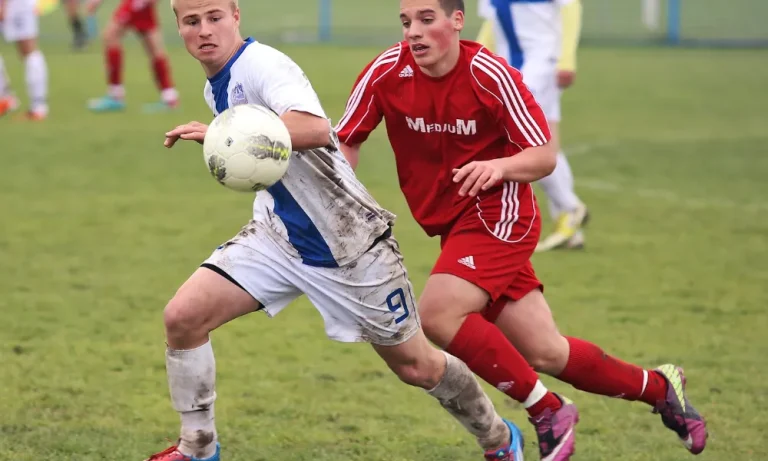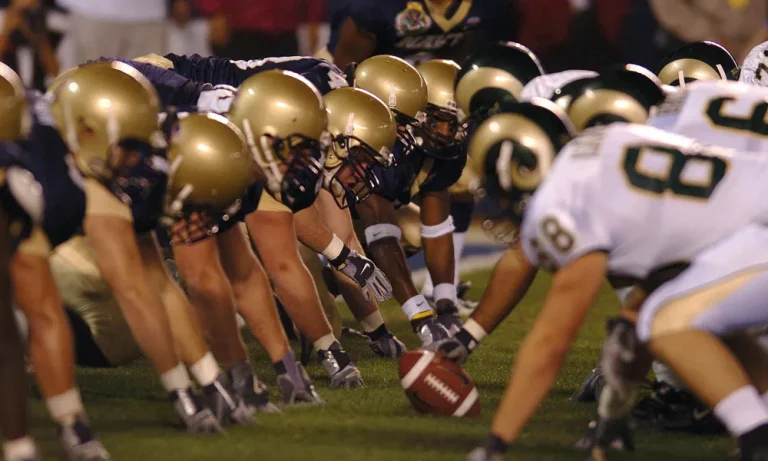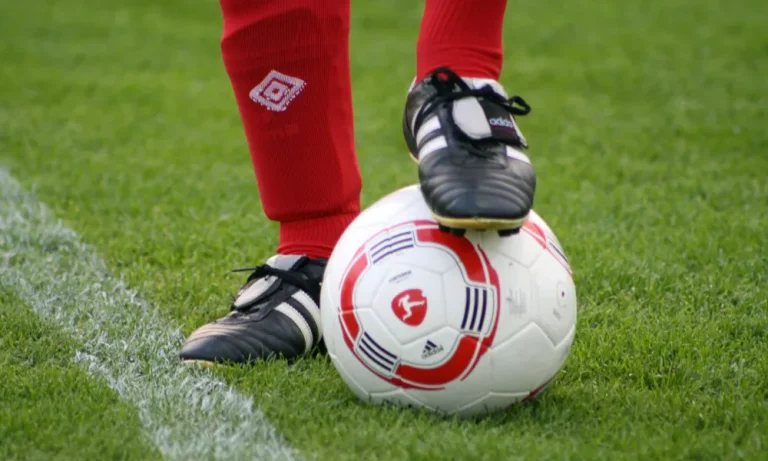Why do Army and Navy have Football Teams?
Why do Army and Navy have football teams? It’s a question that piques curiosity and sparks interest. When we think of the military, football might not be the first thing that comes to mind. However, the Army and Navy have a long-standing tradition of fielding their own football teams. In this blog post, we will delve into the origins and unique purpose behind the establishment of these teams. Join us as we explore the rich history and significance of Army and Navy football teams.
The Origins of Army and Navy Football Teams
When it comes to the origins of Army and Navy football teams, it’s fascinating to uncover how and when these teams were founded. The Army football team, known as the Black Knights, traces its roots back to 1890. It was during this time that cadets at the United States Military Academy in West Point, New York, formed their own football squad. The Navy football team, on the other hand, came into existence a few years later in 1891. Midshipmen at the United States Naval Academy in Annapolis, Maryland, established their team to engage in friendly competition with other colleges.
The historical context surrounding the establishment of these teams is crucial in understanding their significance. During the late 19th century, football was rapidly gaining popularity across college campuses. The Army and Navy viewed this as an opportunity to not only participate in the sport but also instill discipline, physical fitness, and leadership qualities among their cadets and midshipmen. Additionally, the fierce rivalry between the two military branches played a role in fostering a healthy sense of competition and camaraderie through football.
The influence of military culture on the formation of the Army and Navy football teams cannot be underestimated. The military places great emphasis on physical training and team dynamics, and football provided an avenue to cultivate these values. The teams were designed to serve as a training ground for future military leaders, allowing them to develop skills such as discipline, strategy, and resilience. The military culture, with its focus on teamwork and a sense of duty, greatly influenced the formation and purpose of these football teams.
The Role of Football as a Source of Physical Training
When it comes to physical fitness, football plays a crucial role in shaping Army and Navy personnel. The demanding nature of the sport helps build strength, endurance, and agility. Football involves a combination of aerobic and anaerobic exercises, such as running, sprinting, tackling, and jumping. These activities enhance cardiovascular health, muscular strength, and overall physical conditioning.
In comparison to other physical training methods, football offers unique benefits. Unlike individual workouts, football requires coordination and cooperation with teammates, fostering teamwork and communication skills. The competitive nature of the sport also instills a sense of determination and resilience, pushing individuals to overcome challenges and strive for excellence. Moreover, the structured training programs of football teams ensure a comprehensive approach to physical fitness, targeting various muscle groups and improving overall athleticism.
Participating in a team sport like football provides numerous benefits beyond physical fitness. It promotes camaraderie and a sense of belonging, as teammates work together towards a common goal. Football also hones leadership skills, as players take on different roles and responsibilities on the field. Additionally, the sport teaches valuable life lessons such as discipline, time management, and the ability to handle pressure, all of which are essential traits for Army and Navy personnel.
Fostering Leadership and Teamwork
Football plays a significant role in developing leadership skills among Army and Navy cadets. The sport provides opportunities for cadets to take on leadership roles, such as being team captains or leading specific positions on the field. These responsibilities require decision-making, effective communication, and the ability to motivate and inspire teammates. Football teaches cadets the importance of leading by example and understanding the strengths and weaknesses of their team members.
Teamwork and camaraderie are fundamental aspects fostered through football. The sport requires players to work together towards a common goal, relying on each other’s skills and abilities. Football teams emphasize the value of trust, cooperation, and effective communication on and off the field. By working in sync with their teammates, cadets learn the significance of collaboration and how collective efforts lead to success.
The Army and Navy football teams have produced notable leaders who have gone on to make significant contributions in their military careers. One example is Roger Staubach, a former Navy football player who went on to become a highly decorated officer in the Navy and a successful professional football player. Staubach’s leadership skills and determination on the football field translated into his military service, where he demonstrated exceptional leadership qualities. His success serves as an inspiring example of how football can shape and develop leaders within the Army and Navy.
Building Spirit and Morale
Football has a profound impact on the morale and spirit of the Army and Navy communities. The sport brings people together, fostering a sense of unity and pride among cadets, active-duty military personnel, veterans, and their families. The support and enthusiasm for the football teams create a positive atmosphere that uplifts the entire community.
The Army-Navy Game, an annual tradition, showcases the intense rivalry between the two military branches. This game is more than just a football match; it represents the spirit and competitive nature of the Army and Navy. The game serves as a unifying event, bringing together cadets, active-duty military, alumni, and fans from both sides. The tradition associated with the Army-Navy Game further strengthens the sense of camaraderie and pride within the military community.
The football teams of the Army and Navy not only unite the military branches but also inspire them. The dedication, discipline, and hard work displayed by the players serve as a source of motivation for all members of the Army and Navy. Watching their fellow servicemen and women excel on the football field instills a sense of pride and admiration, boosting morale and fostering a positive spirit within the military community.
Recruiting and Branding Opportunities
Football plays a crucial role in attracting potential recruits to the Army and Navy. The sport showcases the physical and mental capabilities required in military service, making it an excellent platform to highlight the opportunities and benefits of joining the military. Football programs within the Army and Navy provide a unique pathway for individuals who are passionate about both sports and serving their country.
The popularity of college football provides an opportunity for the Army and Navy to enhance their branding efforts. By participating in high-profile games and competitions, the military branches can increase visibility and create positive associations with their respective institutions. The intense rivalries and traditions associated with college football further strengthen the branding opportunities, as they attract attention and generate excitement among fans and potential recruits alike.
Success stories of athletes who transitioned from football to military careers serve as powerful examples of the opportunities available within the Army and Navy. These individuals demonstrate the transferable skills and values gained from playing football, such as discipline, teamwork, and leadership. Their stories not only inspire potential recruits but also reinforce the idea that military service can be a rewarding and fulfilling career path after sports.
The Army-Navy Game: A National Tradition
The Army-Navy Game holds a rich history and significant meaning for both the Army and Navy. Dating back to 1890, this annual football matchup between the two military academies has become a cherished tradition that symbolizes the intense rivalry and camaraderie between the two branches. The game represents more than just a sporting event; it embodies the spirit and values of the Army and Navy.
The Army-Navy Game receives national attention and holds a special place in American culture. It captures the nation’s interest as it showcases the dedication and commitment of the cadets and midshipmen who represent their respective branches on the football field. The game draws in a wide audience, including military personnel, alumni, sports enthusiasts, and patriotic Americans, who come together to witness this historic event.
Throughout the years, the Army-Navy Game has produced numerous memorable moments and traditions that have become an integral part of the game’s legacy. From the pregame march-on of the cadets and midshipmen to the singing of the service academy alma maters, each aspect of the game is steeped in tradition. Memorable plays, thrilling comebacks, and displays of sportsmanship have created unforgettable moments that are etched into the hearts of fans and players alike.
Why do the Army and Navy have football teams?
The Army and Navy have football teams to promote physical fitness, teamwork, and leadership skills among their cadets and midshipmen. It also serves as a platform for recruiting potential candidates to the military.
How do the Army and Navy benefit from having football teams?
The Army and Navy benefit from their football teams by using the sport as a tool to attract potential recruits, enhance their branding efforts, and showcase the physical and mental capabilities required in military service.
Do Army and Navy football teams compete against each other?
Yes, the Army and Navy football teams compete against each other annually in the highly anticipated Army-Navy Game, which is considered one of the biggest rivalries in college sports.
Are there any requirements for Army and Navy football team players?
Yes, players on the Army and Navy football teams must be enrolled cadets or midshipmen at their respective military academies and meet the academic, physical, and disciplinary standards set by their institutions.
Can Army and Navy football players pursue military careers after graduation?
Yes, Army and Navy football players can pursue military careers after graduation. Many athletes choose to continue their service in the military, utilizing the skills and values they gained from playing football in their military careers.
Conclusion
The Army and Navy football teams serve a unique purpose within the military community. They go beyond the realm of college sports and embody the spirit of teamwork, leadership, and physical fitness. Through football, cadets and midshipmen develop essential skills that will benefit them throughout their military careers. The enduring legacy of these teams is not just about the game itself but the camaraderie, tradition, and national significance that surrounds the Army-Navy Game. So, the next time you wonder why Army and Navy have football teams, remember the invaluable role they play in shaping the future leaders of our armed forces.





